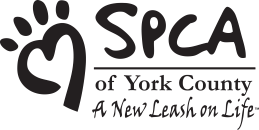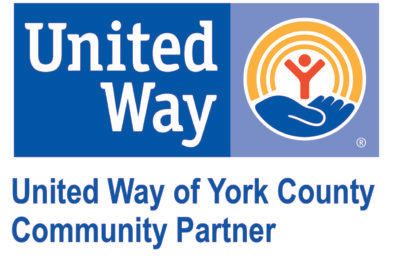
An important element of the York County SPCA’s mission is to help control animal population growth rates in our community. We work tirelessly to fulfill that part of our mission through our high-quality, high-volume spay/neuter clinic, which has been in operation since 2013. We offer spay/neuter services for owned and unowned animals in our community. Unowned animals include free-roaming community cats, who live outdoors, and often receive food and shelter from one or more dedicated caretakers in our community. Free-roaming cats can also include owned outdoor or indoor/outdoor cats, as well as lost or abandoned owned cats. The only humane way to control the population of free-roaming cats is through a TNR (Trap-Neuter-Return) program, like ours at the York County SPCA.
Recently, we’ve had several community members and local trappers inquire about the policies and practices of the York County SPCA’s spay/neuter clinic, specifically in regard to the TNR program, and how it works alongside our companion animal shelter. Here are some of the most common questions we receive and their answers.
For a higher-level overview of our TNR program, and how to get started, please visit our TNR Basics page.
Why would you release a cat the same day as their spay/ neuter surgery?
For TNR patients in our clinic, we strongly recommend allowing cats to recover in a humane trap overnight in a temperature-controlled, quiet, and calm environment, covered with a sheet, towel, or blanket, and releasing the cat back to its outdoor home the following day. TNR surgeries are performed after all surgeries for owned animals have been completed. We perform surgery on TNR cats with appointments first, and cats that arrived as a walk-in last. There are times where we have an overwhelming number of walk-ins for TNR and are unable to safely complete all surgeries that day. In those instances, the cat will be fed and given water in its trap overnight and have surgery the following day.
There are several exceptions to this rule that will be determined by a trained YCSPCA staff member. When an exception on same-day release arises, we will communicate directly with trappers and colony caretakers. For cats where we recommend early release, an anesthetic reversal is administered before the cat leaves the clinic if it shows any sign of residual anesthetic effects or grogginess. If a cat is recently postpartum (has just given birth), we will tell the caretaker to release the cat on the same day as surgery as soon as it is awake, standing, and alert. These mother cats need to get back to where their kittens are in order to give the kittens the best chance at survival. We will also instruct caretakers who have lactating cats to release them as soon as they are alert so that they may return to their litters. If a caretaker does not have a suitable staging area (a temperature-controlled area with shelter from the elements) in which to keep the traps after surgery, it is also acceptable to release these cats when they are alert. We never want to leave traps with cats in them exposed to the elements or in an unsafe area.
Cats that are KNOWN to have very contagious diseases such as ringworm, panleukopenia, or Giardia are not typically candidates for TNR through our high volume spay/neuter clinic. Despite meeting AAHA standards of cleanliness and disinfection between patients, it is impossible to fully isolate affected cats from unaffected ones. As we perform on average 50 surgeries per day, it is too much risk to the rest of our patient population to have these affected patients in the clinic with them. In the instances where we do have cats come in with these contagious diseases, we disinfect all surfaces and equipment and use appropriate PPE to minimize transmission. These cats are also discharged from the clinic on the same day as surgery so that we can fully disinfect all areas before 50+ more patients start arriving the next morning.
I heard that you don’t give TNR cats pain medication, is that true?
This is false. Every animal that undergoes a spay/neuter surgery in our clinic is given pain medication according to their needs. TNR cats all receive an injection of a long-acting nonsteroidal anti-inflammatory drug (NSAID) which provides 24-48 hours of post operative pain control. For cats who come in with painful wounds or have more extensive surgery, they may receive a long-acting opioid injection at the doctor’s discretion.
What does the $20 TNR fee include?
The TNR program at the York County SPCA provides more than just spay/neuter surgery. Our dedicated veterinary staff cares for and treats each individual animal according to its unique circumstances.
The cost for TNR includes the following services:
- Examination: A veterinary technician will examine every cat after it is under anesthesia and alert the doctor of any abnormalities.
- You will be contacted by phone while the cat is under anesthesia if there are any serious medical concerns that need to be addressed.
- Rabies Vaccination: All cats receive a rabies vaccination while in our care.
- Ear Tipping: Each cat’s left ear is tipped to help people easily identify that they have been spayed/neutered and rabies vaccinated. Ear tipping is required for all cats and cannot be declined.
- Tattoo: Each cat receives a green scoring tattoo on the abdominal area by the belly button. This is a universal sign that the cat has been spayed/neutered.
- If there are concerns such as minor wounds or parasites that require treatment, the staff will ensure that these are treated to the best of our ability. All cats with ear mites also receive a complimentary ear cleaning while they are under anesthesia.
- If the cat is pregnant, we will administer subcutaneous fluids after surgery to help their recovery process.
- If a cat is already spayed or neutered, staff will scan the cat for a microchip, and try to reunite them with their family if possible. If no microchip is found, the cat will receive an ear tip to show that they are spayed or neutered, and the cat will be returned to the trapper for release. In the event that an owned outdoor or indoor/outdoor cat has been trapped and brought for TNR and does not have a microchip, the most successful way to reunite that cat with their family is by releasing them in the same exact spot that the cat was trapped.
I have a lot of feral cats in my neighborhood, but I am unable to trap them myself – can you trap them?
If you are seeking assistance to Trap Neuter Return (TNR) a colony of free-roaming cats, we can help.
The York County SPCA aids community members seeking to manage community cats by having our Field Services Agent set traps on your property and transport the trapped cats to and from our Spay/Neuter Clinic. We do ask that a caretaker be nearby while the trapping is taking place, as our Field Services Agent relies on a caretaker to monitor the traps until the agent can return and transport them to the clinic. There is an additional $5 per cat fee for this service. Please note that this program is only available for a colony of 10 or more cats.
More information about this program is available via our TNR Basics page.
We are so grateful to the many community members working alongside us to help control the free-roaming cat population in and around York County. The best way to ensure these animals have the best chance for a live outcome is to make sure they are spayed or neutered. Thank you for partnering with us to help create a better future for animals in our community.








